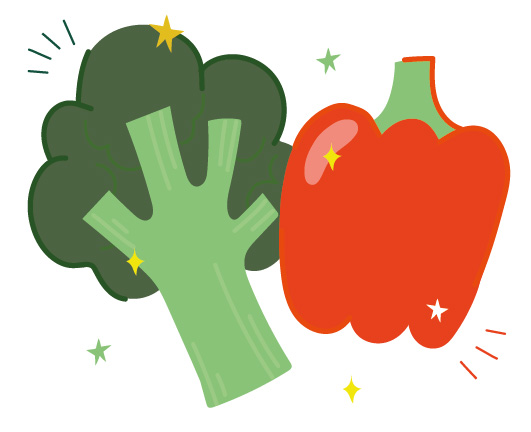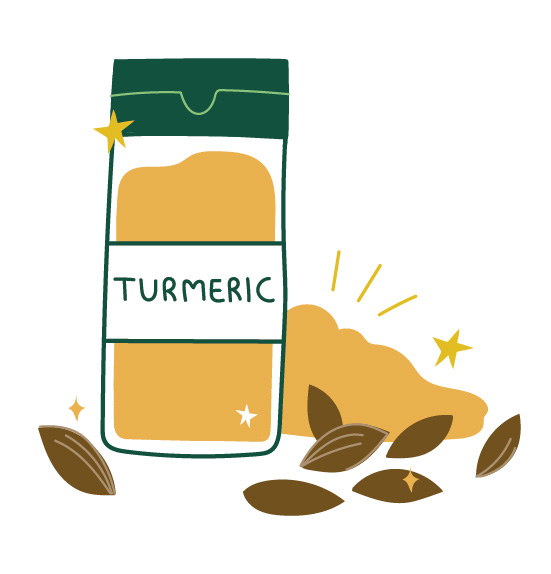Why not use your extra time at home to try out some new recipes and build up your immune system at the same time?
This blog post contains some info on the different nutrients and vitamins found in the fruit and veg you might already have at home or available at most supermarkets. These can all either be eaten on their own or added to tasty meals! Enjoy!
Citrus fruits

Grapefruits
Oranges
Tangerines
Lemons
Limes
Clementines
Most people turn to vitamin C after they’ve caught a cold. That’s because it helps build up your immune system. Vitamin C is thought to increase the production of white blood cells. These are key to fighting infections so are an important part of your diet all year round. Because your body doesn’t produce or store it, you need daily vitamin C for continued health. Almost all citrus fruits are high in vitamin C. With such a variety to choose from, it’s easy to add a squeeze of this vitamin to any meal.
Red bell peppers
If you think citrus fruits have the most vitamin C of any fruit or vegetable, think again. Ounce for ounce, red bell peppers contain twice as much vitamin C as citrus. They’re also a rich source of beta carotene (converted by the body into vitamin A!). Besides boosting your immune system, vitamin C may help maintain healthy skin.

Broccoli
Broccoli is supercharged with vitamins and minerals. Packed with vitamins A, C, and E, as well as many other antioxidants and fiber, broccoli is one of the healthiest vegetables you can put on your table. The key to keeping its power intact is to cook it as little as possible.
Garlic
Garlic is found in almost every cuisine in the world. It adds a little zing to food and it’s a must-have for your health. Early civilisations recognised its value in fighting infections. According to experts, garlic may also help lower blood pressure and slow down hardening of the arteries. Garlic’s immune-boosting properties seem to come from a heavy concentration of sulphur-containing compounds, such as Allicin.
Ginger

Ginger is another ingredient many turn to after getting sick. Ginger may help decrease inflammation, which can help reduce a sore throat and other inflammatory illnesses. Ginger may also help decrease nausea. While it’s used in many sweet desserts, ginger packs some heat in the form of gingerol, a relative of capsaicin. Ginger may help decrease chronic pain and may possess cholesterol-lowering properties. Spinach made our list not just because it’s rich in vitamin C. It’s also packed with numerous antioxidants and beta carotene, which may increase the infection-fighting ability of our immune systems. Similar to broccoli, spinach is healthiest when it’s cooked as little as possible so that it retains its nutrients. However, light cooking enhances its vitamin A and allows other nutrients to be released from oxalic acid. Look for yogurts that have “live and active cultures” printed on the label, like Greek yogurt. These cultures may stimulate your immune system to help fight diseases. Try to get plain yogurts rather than the kinds that are pre-flavoured and loaded with sugar. You can sweeten plain yogurt yourself with healthy fruits and a drizzle of honey instead. Yogurt can also be a great source of vitamin D, so try to select brands fortified with vitamin D. Vitamin D helps regulate the immune system and is thought to boost our body’s natural defences against diseases. When it comes to preventing and fighting off colds, vitamin E tends to take a backseat to vitamin C. However, vitamin E is key to a healthy immune system. It’s a fat-soluble vitamin, meaning it requires the presence of fat to be absorbed properly. Nuts, such as almonds, are packed with the vitamin and also have healthy fats. A half-cup serving, which is about 46 whole, shelled almonds, provides nearly 100 percent of the recommended daily amount of vitamin E. You may know turmeric as a key ingredient in many curries. But this bright yellow, bitter spice has also been used for years as an anti-inflammatory in treating both osteoarthritis and rheumatoid arthritis. Also, research shows that high concentrations of curcumin, which gives turmeric its distinctive colour, can help decrease exercise-induced muscle damage. Information in this blog post has been gathered from Healthline, bbcgoodfood and NHS.uk.Spinach

Yoghurt
Almonds

Turmeric
